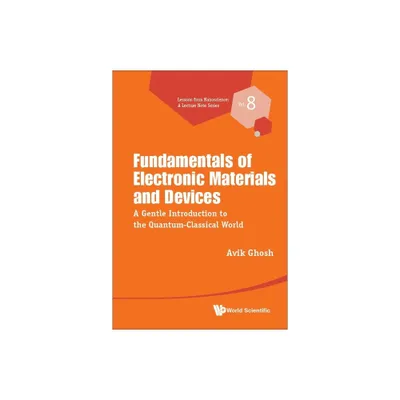Home
Fundamentals Of Electronic Materials And Devices: A Gentle Introduction To The Quantum-classical World
Loading Inventory...
Barnes and Noble
Fundamentals Of Electronic Materials And Devices: A Gentle Introduction To The Quantum-classical World
Current price: $108.00


Barnes and Noble
Fundamentals Of Electronic Materials And Devices: A Gentle Introduction To The Quantum-classical World
Current price: $108.00
Loading Inventory...
Size: Hardcover
*Product Information may vary - to confirm product availability, pricing, and additional information please contact Barnes and Noble
The Romans built enduring bridges well before Newton came along, armed simply with a working knowledge of mechanics and materials. In contrast, today's bridge building is an elaborate enterprise involving CAD tools, composite materials and acoustic imaging. When technology is pushed to its limits, a working knowledge proves inadequate, and an in-depth understanding of core physical principles, both macroscopic and microscopic, top-down vs bottom-up, becomes essential.We find ourselves today at a similar crossroad in semiconductor device technology, where a working knowledge of solid state electronics is no longer enough. Faced with the prohibitive cost of computing and the slowdown of chip manufacturing, device scaling and the global supply chain, the semiconductor industry is forced to explore alternate platforms such as 2-D materials, spintronics, analog processing and quantum engineering.This book combines top-down classical device physics with bottom-up quantum transport in a single venue to provide the basis for such a scientific exploration. It is essential, easy reading for beginning undergraduate and practicing graduate students, physicists unfamiliar with device engineering and engineers untrained in quantum physics. With just a modest pre-requisite of freshman maths, the book works quickly through key concepts in quantum physics, Matlab exercises and original homeworks, to cover a wide range of topics from chemical bonding to Hofstader butterflies, domain walls to Chern insulators, solar cells to photodiodes, FinFETs to Majorana fermions. For the practicing device engineer, it provides new concepts such as the quantum of resistance, while for the practicing quantum physicist, it provides new contexts such as the tunnel transistor.


















